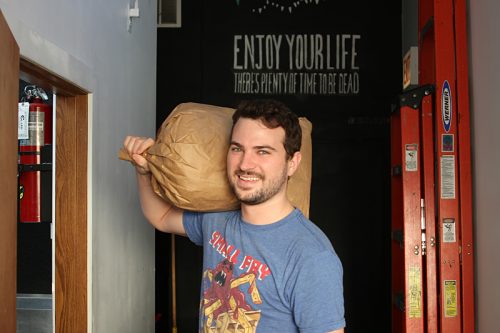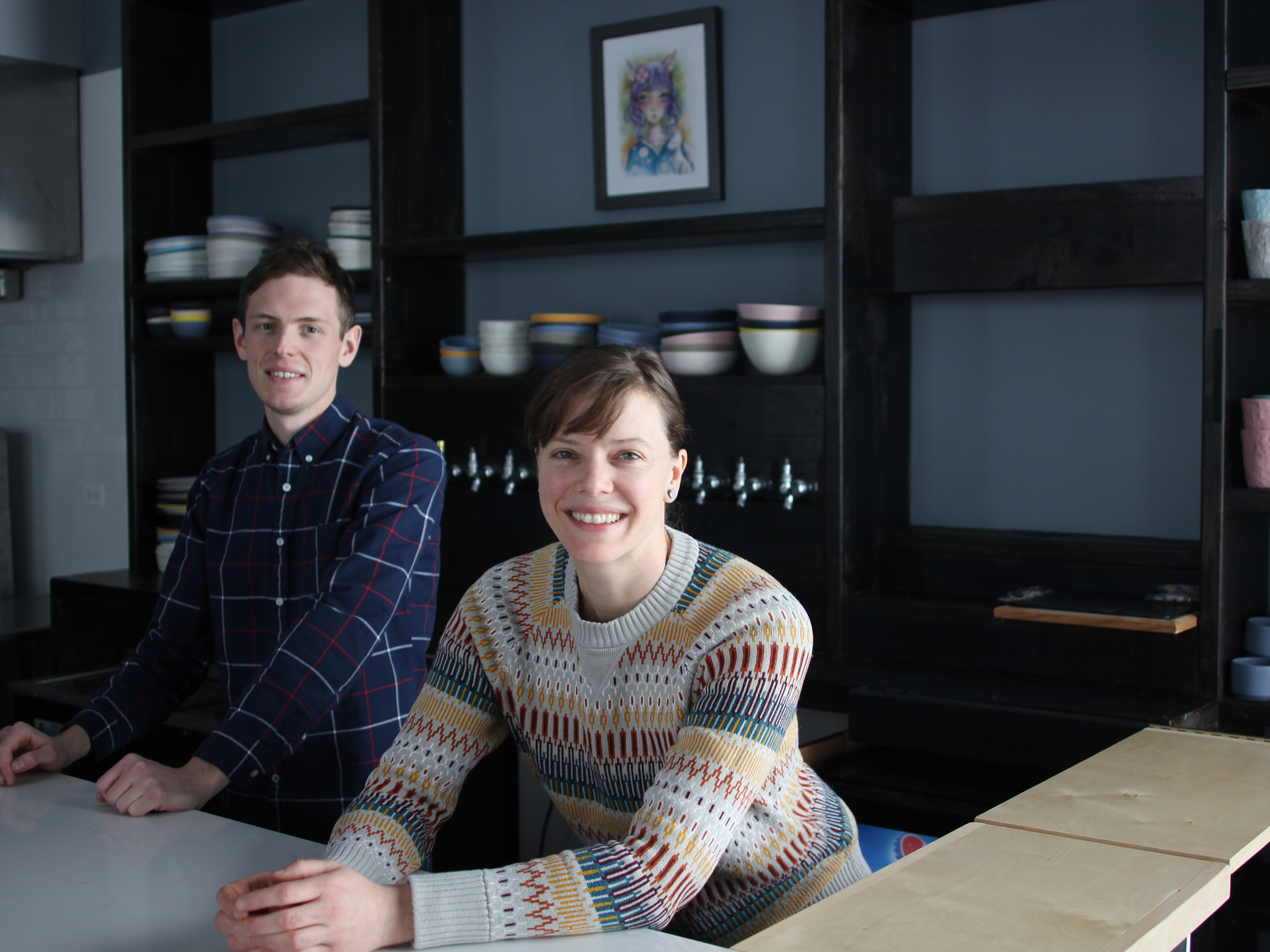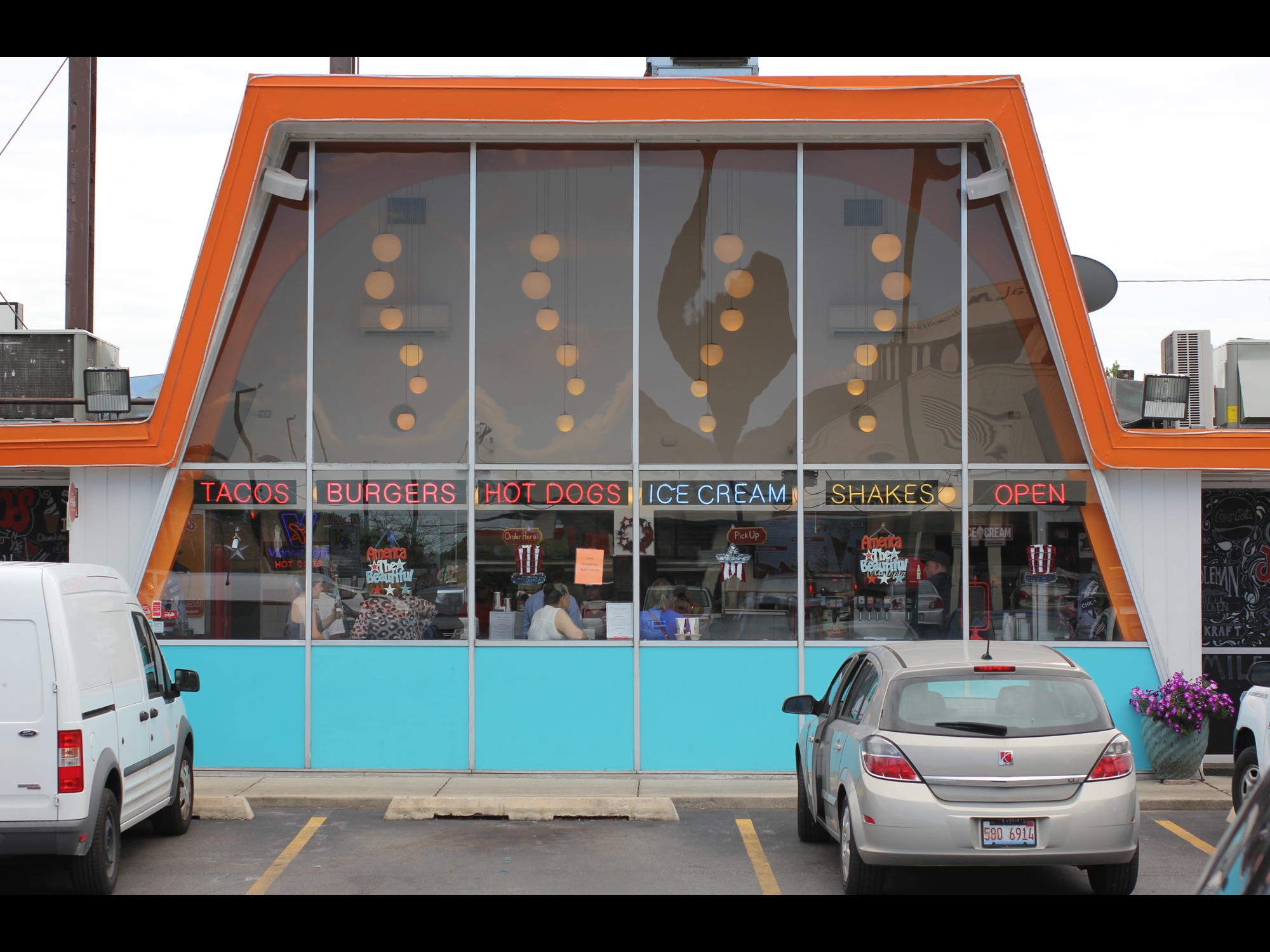LET’S CUT STRAIGHT TO THE CENTRAL QUESTION I asked Egan Quinn, owner of SmallFry in Logan Square. I first tried his place when I did a piece for Chicagoist on relatively inexpensive burgers. But we’re in a time when $14 artisanal burgers are common—when you can get away with that—so, why open such a modestly priced place?
“Because I wanted it to be a fast food burger,” Quinn says. “I’ve had a lot of burgers around town that, after I eat them, I feel miserable and need to lay down. I wanted to make burgers that you could eat—and go on with your day.”

Egan Quinn
SmallFry’s burger starts at $6. For that you get a 3.5-oz patty of fresh grassfed beef (mostly chuck, with brisket and short rib) from Meats by Linz, smashed on the griddle and topped with a pretty simple array of toppings—American cheese sauce, “awesome sauce” (a dialed-up version of Thousand Island that starts with garlic aioli), pickles and onions. Another $3 gets you a second patty. “We wanted it to be simple. We wanted to highlight the meat more than anything—I don’t think every burger needs lettuce and tomato and a bunch of other stuff,” says Quinn.
“The price point it’s at is totally reasonable, you can get a whole meal here for $11, burger, fries and a drink,” Quinn says. And that’s at a pretty high level of quality—”Short of baking the bun, we make everything in house.” The pickles are cured in-house, the fries are fresh cut and double-fried, while the cheese sauce is a real concoction made of sharp cheddar, havarti and pecorino cheese, cooked down in cheap boxed wine. Working your way through the rest of the (short) menu, you find the same attention to making things the fresh and proper way—corn dogs are hand-dipped in housemade batter, the brisket poutine uses brisket slow-cooked in-house (so that they can also make the gravy in-house without buying stock), and so on.
I’ve done what every economics student shouldn’t do, ignore the professors and open a restaurant.
In short, this is a burger joint that makes everything right and doesn’t lose the plot in screwy ideas of ever more exotic things you can (theoretically) top a burger with. I ask Quinn where that, and he, came from. “I grew up in northern Michigan, my parents were excellent cooks. And I was fortunate enough that they had me travel at a young age, so I was eating exotic foods from the get-go,” he says. “I started in restaurants, uh… when can you start in restaurants in the state of Michigan? 13 or 14, at Schlotzsky’s Deli.”
He went to DePaul to study economics—”And now I’ve done what every economics student shouldn’t do, ignore the professors and open a restaurant,” he laughs. Well, other bars and restaurants came first, like BellyQ and Bohemian House. But when it came to saving up enough money to open his own place, he thought back to burger stands he’d known in Traverse City—Chef’s Inn, J&S Hamburg. “I wanted to open a fast food joint, because those were the restaurants I loved,” he says.
“Originally, this place was just going to be a french fry joint,” he says, citing New York’s Pommes Frites as a model. “But I think it has to be close to a high density college campus to work.” After he and his father went to New York to check it out, “we realized you probably need to serve a full meal to people.”
Gallery: Anatomy of a Burger
YOU ALSO NEED A NEIGHBORHOOD WITH, say, a big new condo building across the street, full of people looking for a quick bite. That was the idea behind opening up directly across from the MegaMall flea market on Milwaukee, which was supposed to be replaced by at least condos under construction by now. Instead Quinn gazes out on a pile of rubble that looks like Robocop might come out of it clutching a perp, and thinks wistfully about the traffic he’ll have someday.
“I spent about a year on it, getting a whole business plan together,” he says. “I’ve lived throughout these neighborhoods the last 11 years, and I thought this would be a good spot for it. But they’re a little behind schedule, so we need to grind it out until they’re up. Foot traffic during the summer was fantastic, but it has died down a little bit. It’s a little bit of a dead spot right now, but we do get late night traffic from The Owl and Estereo, so we stay open until two, to get in on that.”
Even as he evokes the classic American burger stand, though there’s one modern addition he knew he had to have for a modern audience, and it too had to be made from scratch. “I knew I wanted to do a veggie burger,” he says. “A veggie burger is the one thing that I’ve really, really been focusing on, we’ve been trying to nail down. I think we’ve got it pretty good, this is my iteration number… probably 70 times, something like that.” It’s mostly black beans and different kinds of mushrooms, with spices, farro, and a vegan binder; it doesn’t fool you it’s beef (veggie burgers never do) but it tastes hearty enough to satisfy.
“The process takes a full 48 hours—you have to roll it out, throw it in a water bath, make sure it’s set, and then cut it,” he says. From there, though, it’s treated just like a meat burger, with the same toppings, though he’s more indulgent of lettuce and tomato on this one. “I wanted it to be a fast food veggie burger, just like our regular cheeseburger,” he says.
Looking back on everything he’s done to get here, from painting to cooking every night, he says, “It’s a bit of a trial by fire, but I’m enjoying the heck out of it.” That raises an obvious question: does he have more places in mind for the future? Is SmallFry going to get big?
“There’s no chance of even thinking about that,” he says. “I’m here every single day—I basically live here,” he says, as a couple of urban adventurers clamber up the pile of rubble across the street, which someday, hopefully, will be his steady clientele.
Michael Gebert still dreams of the burgers at Bill’s Big 6 in his hometown, as editor of Fooditor.
Now there’s a guide for the whole city. Get The Fooditor 99 at Amazon and for Kindle here.
Latest
Join the Discussion
After you comment, click Post. If you're not already logged in you will be asked to log in or register with Disqus.















